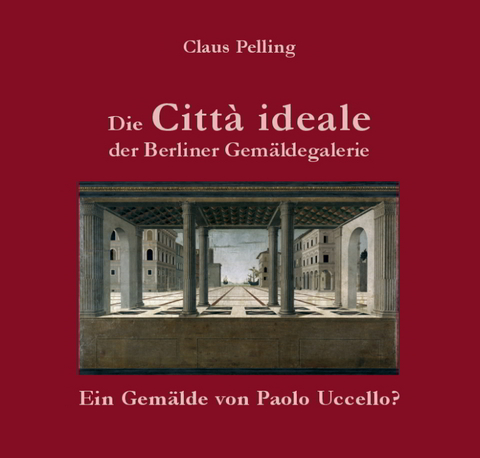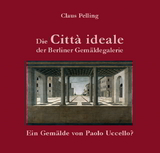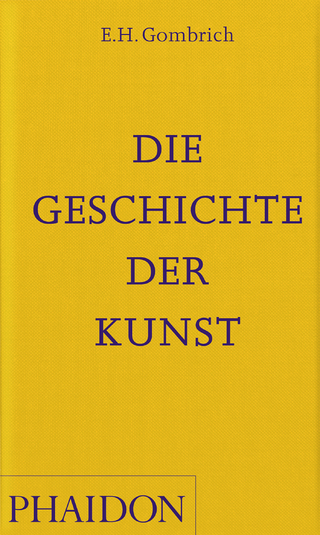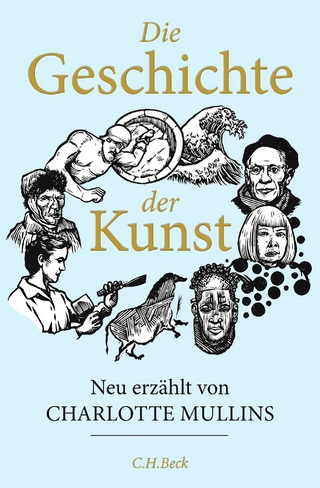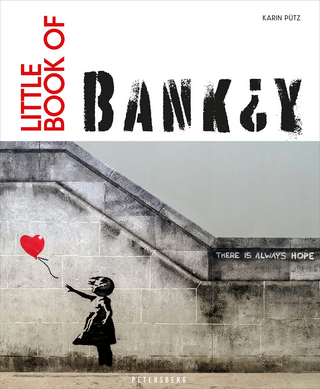Die Città ideale der Berliner Gemäldegalerie -
Ein Gemälde von Paolo Uccello?
Seiten
2020
|
1., Aufl.
VML Vlg Marie Leidorf (Verlag)
978-3-86757-087-9 (ISBN)
VML Vlg Marie Leidorf (Verlag)
978-3-86757-087-9 (ISBN)
Die Gemäldegalerie Alte Meister in Berlin verwahrt ein ca. 1,2 x 2,3 m großes italienisches Temperagemälde auf Pappelholz, das die Bezeichnung “Architektonische Vedute” trägt und dem Sieneser Architekten und Maler Francesco di Giorgio Martini [1439-1502] zugeschrieben wird. Es gehört als menschenleere Stadtansicht zum Bildtypus einer Città ideale und stammt wohl von einer Wandverkleidung oder Möbelverkleidung. Der Autor unternimmt anhand kompositorischer Besonderheiten und charakteristischer Details eine Neuzuschreibung des Bildes, darunter die unteransichtige diamantverzierte Flachdecke der Loggia, Wolken mit kumulusartig aufsteigenden Partien, Schiffe in Form zweier Cocce und einer Galeere, eine asymmetrisch platzierte Zypresse und die Betonung des Gegensatzes nah-fern. Der Urheber des Bildes ist demnach, wohl um 1455, der Florentiner Paolo Uccello [1397-1475], der sich intensiv mit der Darstellung geometrischer Körper im Raum und von Architektur beschäftigt hat und ausdrücklich als Maler von Möbeleinsätzen überliefert ist. Die Deutung wird gestützt durch die strukturelle Verwandtschaft mit Uccellos “Jagd im Walde”, die durch ein Superpositionsbild verdeutlicht wird.
The Gemäldegalerie Alte Meister in Berlin keeps an Italian tempera painting on poplar, some 1.2 m by 2.3 m wide, with the title of an “Architectural Veduta” which is attributed to the architect and painter Francesco di Giorgio Martini [1439-1502] from Siena. As a view of a deserted town the picture belongs to the type of città ideale and probably derives from a wall panelling or piece of furniture. The present author presents a new attribution on the basis of peculiarities of composition and characteristic details such as the diamond-decorated flat ceiling of the loggia seen from below, clouds with cumulus-shaped rising parts, ships in the shape of two cocce and a galley, a cypress in asymmetric location, and the emphasis on the contrast of near and far. According to this, the real creator of the picture is, probably around A.D. 1455, the Florentine Paolo Uccello [1397-1475] who meticulously studied the representation of geometrical bodies in space and of architecture and is explicitly mentioned as a painter of furniture inlays. This interpretation is supported by the structural affinity with Uccello’s “The Hunt in the Forest” which is illustrated by a superimposed image of the two pictures. The Gemäldegalerie Alte Meister in Berlin keeps an Italian tempera painting on poplar, some 1.2 m by 2.3 m wide, with the title of an “Architectural Veduta” which is attributed to the architect and painter Francesco di Giorgio Martini [1439-1502] from Siena. As a view of a deserted town the picture belongs to the type of città ideale and probably derives from a wall panelling or piece of furniture. The present author presents a new attribution on the basis of peculiarities of composition and characteristic details such as the diamond-decorated flat ceiling of the loggia seen from below, clouds with cumulus-shaped rising parts, ships in the shape of two cocce and a galley, a cypress in asymmetric location, and the emphasis on the contrast of near and far. According to this, the real creator of the picture is, probably around A.D. 1455, the Florentine Paolo Uccello [1397-1475] who meticulously studied the representation of geometrical bodies in space and of architecture and is explicitly mentioned as a painter of furniture inlays. This interpretation is supported by the structural affinity with Uccello’s “The Hunt in the Forest” which is illustrated by a superimposed image of the two pictures.
The Gemäldegalerie Alte Meister in Berlin keeps an Italian tempera painting on poplar, some 1.2 m by 2.3 m wide, with the title of an “Architectural Veduta” which is attributed to the architect and painter Francesco di Giorgio Martini [1439-1502] from Siena. As a view of a deserted town the picture belongs to the type of città ideale and probably derives from a wall panelling or piece of furniture. The present author presents a new attribution on the basis of peculiarities of composition and characteristic details such as the diamond-decorated flat ceiling of the loggia seen from below, clouds with cumulus-shaped rising parts, ships in the shape of two cocce and a galley, a cypress in asymmetric location, and the emphasis on the contrast of near and far. According to this, the real creator of the picture is, probably around A.D. 1455, the Florentine Paolo Uccello [1397-1475] who meticulously studied the representation of geometrical bodies in space and of architecture and is explicitly mentioned as a painter of furniture inlays. This interpretation is supported by the structural affinity with Uccello’s “The Hunt in the Forest” which is illustrated by a superimposed image of the two pictures. The Gemäldegalerie Alte Meister in Berlin keeps an Italian tempera painting on poplar, some 1.2 m by 2.3 m wide, with the title of an “Architectural Veduta” which is attributed to the architect and painter Francesco di Giorgio Martini [1439-1502] from Siena. As a view of a deserted town the picture belongs to the type of città ideale and probably derives from a wall panelling or piece of furniture. The present author presents a new attribution on the basis of peculiarities of composition and characteristic details such as the diamond-decorated flat ceiling of the loggia seen from below, clouds with cumulus-shaped rising parts, ships in the shape of two cocce and a galley, a cypress in asymmetric location, and the emphasis on the contrast of near and far. According to this, the real creator of the picture is, probably around A.D. 1455, the Florentine Paolo Uccello [1397-1475] who meticulously studied the representation of geometrical bodies in space and of architecture and is explicitly mentioned as a painter of furniture inlays. This interpretation is supported by the structural affinity with Uccello’s “The Hunt in the Forest” which is illustrated by a superimposed image of the two pictures.
| Erscheinungsdatum | 04.08.2020 |
|---|---|
| Übersetzer | John Diebel |
| Verlagsort | Rahden/Westf. |
| Sprache | englisch; deutsch |
| Maße | 210 x 200 mm |
| Gewicht | 200 g |
| Einbandart | Paperback |
| Themenwelt | Kunst / Musik / Theater ► Kunstgeschichte / Kunststile |
| Technik ► Architektur | |
| Schlagworte | Architektur • Gemälde • Handwerk • Kunst • Renaissance |
| ISBN-10 | 3-86757-087-6 / 3867570876 |
| ISBN-13 | 978-3-86757-087-9 / 9783867570879 |
| Zustand | Neuware |
| Informationen gemäß Produktsicherheitsverordnung (GPSR) | |
| Haben Sie eine Frage zum Produkt? |
Mehr entdecken
aus dem Bereich
aus dem Bereich
